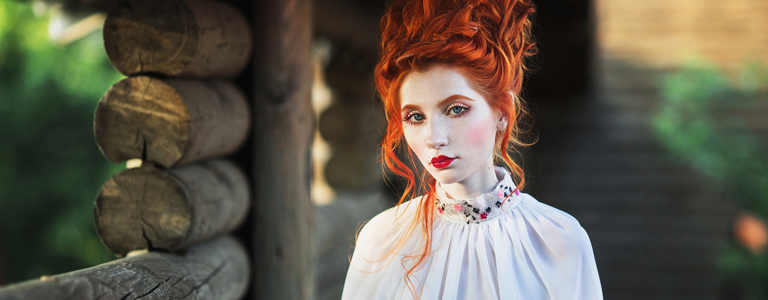
The beauty business is booming. It was notoriously an industry heavily marketed towards females, but now male consumers have got in on the action, with sales of men’s grooming and cosmetic products rocketing in recent years! Items such as moisturisers, eyeliner and hair styling products have been popular for centuries, but where did it all begin and what strange make-up ideas did people once have? Come with us on a journey through the history of cosmetics…
In the Elizabethan era, having pale skin was a sign of prestige
When pale skinned, red headed Queen Elizabeth I ascended the throne in 1558, her complexion was considered to be the beauty ideal to aspire to, just like the lady in the image above. Having pale skin was a sign that you were upper class, compared to lower class people that had a tan from working in manual labour jobs outside all day. Source.
Victorian women didn’t wear any make-up
In those more prude times, make-up was considered to be a marker of lack of class. Upper class ladies thought that the only women who wore make-up were actresses and prostitutes! This might be the most judgemental period of the history of cosmetics… Source.
The first nail polish came from China
Believe it or not, the first ever nail polish was invented around 3000BC in China! It was made using gum, beeswax, egg whites and natural coloured pigments. Source.
Roman women loved rouge
In Ancient Rome, women used a red ochre pigment from clay (which was actually hydrated iron oxide!) and alkanet root to create rouge to rub on their cheeks and lips for a rosy complexion. The deep red colouring from the red ochre was achieved by mining the clay, washing it to remove grains of sand and then leaving it to dry out in the sun to enhance the natural red colouring. Source.
Infants in Ancient Egypt wore black eye make-up
Newborn babies would have kohl applied to their eyes because Egyptians at the time believed that it would strengthen the child’s eyes and prevent him or her being cursed by an evil eye! Source.
Ever wondered why the Mona Lisa has no eyebrows?
In the later period of the Middle Ages, it was a trend for women not to have any hair whatsoever on their faces in order to show off their foreheads, which were considered a desirable feature at the time. This meant that many women plucked off all of their eyebrows and eyelashes. The Mona Lisa, which was painted during this period, reflects this strange trend! Source.
Some make-up could kill you in the 18th Century
A lot of red and white make-up powder in the 18th Century contained lead. This obviously isn’t a great thing to be putting on your skin regularly, which resulted in a rapid increase of lead poisoning, which symptoms included swollen eyes, crumbling tooth enamel and even blacked skin! Source.
Mascara as we know it wasn’t invented until 1913
French chemist and perfumer Eugène Rimmel (recognise the name?) perfected the first ever mascara that we know and love today. Its popularity spread incredibly quickly across Europe because it was non-toxic! Maybelline then developed a similar product and worldwide acceptance of mascara became commonplace. Source.
The beauty industry is estimated to generate around $445 billion worldwide in 2018!
Get some of the action yourself and carve out your own little (or big!) piece of cosmetics history! We’ve got plenty of glass cosmetics jars and bottles that are perfect for all types of products in the beauty industry, with closures to match. So whether you’re selling hair spray, foundation, lotions, fragrances, aromatherapy oils or more, we’ve got your packaging needs covered! Check out just a few of our great packaging options below.

